
views
Preventing Soreness and Fatigue
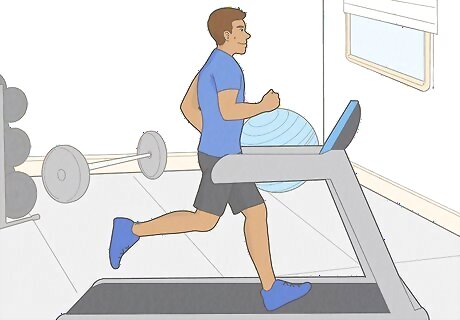
Go slow on your first day at the gym. If you haven’t worked out in a while, it may take your body a few sessions to get back into the swing of a gym routine. Set a goal for about 1 hour of moderate exercise for your first day back in the gym, and adjust your routine after you see how you feel. If you exercise too much your first day at the gym and get super sore and tired, you could discourage yourself from going back. Try to pace yourself so you can stick to a workout routine.
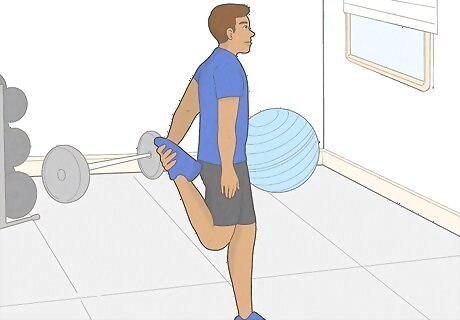
Stretch your muscles for 10-15 minutes after you work out. While you’re still warm from working out, try to stretch the muscles that you worked the most to relieve some of the soreness and stiffness the next day. You should dedicate about 10 to 15 minutes to stretching after your workout for the best results. If you’re taking a class at the gym, the instructor may lead you in a cool down. Otherwise, you can try these basic stretches: Stand up straight and pick up one leg behind you, pulling your foot in toward your rear. Squeeze your glutes to feel a stretch in your quad, then switch to the other leg. Pull your right arm across your chest, using your left arm to pull your bicep into a stretch. Hold this for about 30 seconds, then switch arms. Stand with your feet shoulder-width apart and keep your legs straight. Bend at the waist and reach your hands down to touch your toes, feeling a stretch in your hamstrings. Hold this for about 30 seconds. Turn your head to the right, stopping when you feel a stretch in the left side of your neck. Hold this for about 10 seconds, then switch to the other side.
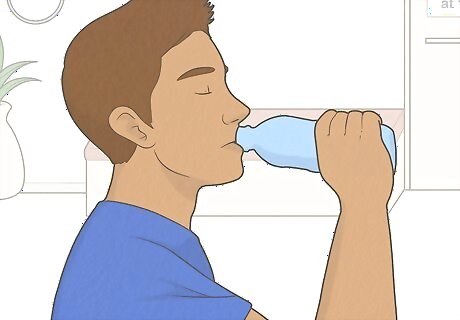
Drink a lot of water before, during, and after your workout. When you work out, you lose a lot of water from sweating. Make sure you keep a water bottle nearby and take a drink every time that you’re thirsty. Keep using your water bottle after you work out to mitigate sore muscles and fatigue. Stay away from dehydrating liquids, like coffee, tea, and alcohol. For most physically active adults, 10 to 15 glasses of water per day is a good goal to aim for.

Get at least 8 hours of sleep after your workout. The night after you work out, make sure you get at least 8 solid hours of sleep to help your body recover. This is not only a good practice to help you recuperate from a workout, but it can also lead to better overall health. Exercising can tire you out more, leading to better, easier sleep. If you are a teenager, try to get 9 to 10 hours of sleep per night.
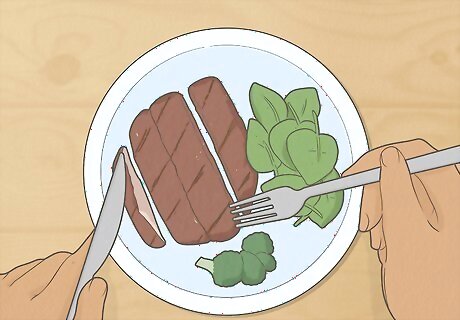
Eat lean protein after a workout to keep your body healthy and strong. Eating balanced meals before and after you work out can help your body work at full capacity to restore your muscles. Lean proteins and plant proteins can both help your muscles recover faster after a workout. Try to incorporate healthy foods into your diet, like: Low cut fats of beef or pork Skinless chicken or turkey Beans Unsalted nuts and seeds

Take a rest day to avoid straining yourself. It can be tempting to go to the gym every day for a full week, especially if you’ve just gotten back into the habit. However, you should give yourself 1 full day of rest in between strenuous exercise to avoid muscle strain. Letting your body recover can also help you build muscle and lose weight faster. Taking a rest day doesn’t mean you can’t do any exercise at all. Consider adding in a light jog or a cardio exercise to get your heart rate up, but save the strength training or high intensity workouts for another day.
Resting and Healing Your Muscles
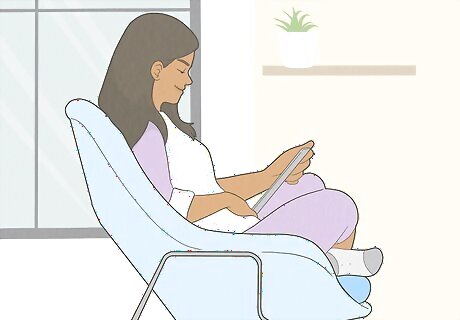
Avoid strenuous activity for the next 24 hours. Your muscles need time to recover, and resting them is the best way to avoid injury. If you can, try not to do anything strenuous for the next day or so to avoid hurting yourself or making your muscles more sore. Sore muscles are normal, especially if you haven’t worked out in a while. If your muscle pain lasts longer than 1 week or it gets worse with exercise, seek medical care.
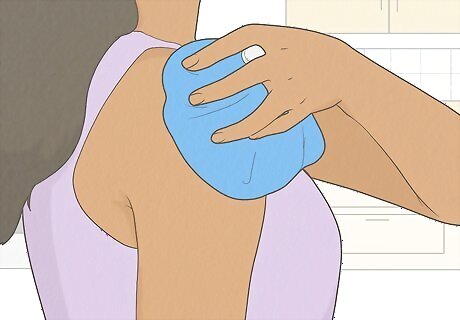
Press an ice pack against your sore muscles. Ice can help reduce inflammation and allow your muscles to recover quicker. Hold an ice pack or a bag of ice cubes against your muscles for 20 minutes at a time, 2 to 3 times per day. If you’re using a bag of ice cubes, wrap it in a kitchen towel so your muscles don’t get too cold. Consider keeping a few ice packs in your freezer so you have a couple ready if you need them.

Try a warm shower or bath to loosen and soothe painful muscles. The warmth from a nice shower or bath can bring blood flow to your muscles, helping them recover more quickly. If you have the time, try taking a 10 to 15 minute shower using warm water, and focus the stream on the areas of your body that are the most sore. You can try warming and cooling your muscles throughout the day.

Elevate your sore muscles above the level of your heart. Elevation can take blood flow away from your sore muscles, making them hurt less. If you can, try to sit or stand in a way that your sore muscle areas are raised up above the level of your heart to relieve some pain. If your sore muscles are in your lower body, you can lay down and lean your legs up against a wall or a table.
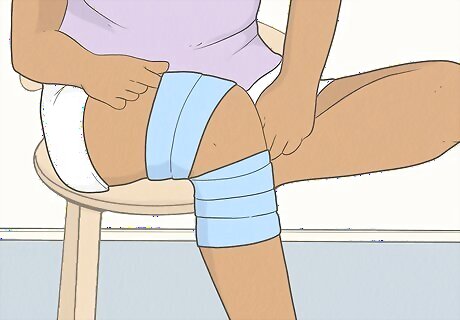
Wrap your sore muscles in an elastic bandage to reduce pain. Grab a roll of elastic bandages and wrap a layer around your sore muscles. Make sure it’s not tight enough to cut off any blood flow, and keep the bandage on for about 5 hours before taking it off. The compression from the bandage can keep blood flow away from your muscles, leading to less soreness and pain.

Take an over-the-counter pain reliever to manage soreness. Aspirin, ibuprofen, and naproxen can all help reduce swelling and decrease the pain of sore muscles. Follow the directions on your bottle of pain relievers and take them periodically throughout the day to reduce your soreness and stiffness. Use caution with over-the-counter pain relievers, and never take more than the recommended dose.
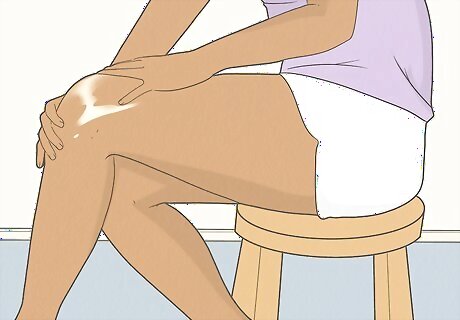
Rub a pain-relieving cream onto your sore muscles for relief. For a concentrated approach, pick up a tube of pain-relieving cream and rub a dime-sized amount onto your muscles. Focus on the area of your body that feels the most sore, and follow the directions on the tube for how often you should reapply. Look for creams with menthol or methyl salicylate in them. You can find IcyHot and Aspercreme at most drug stores.
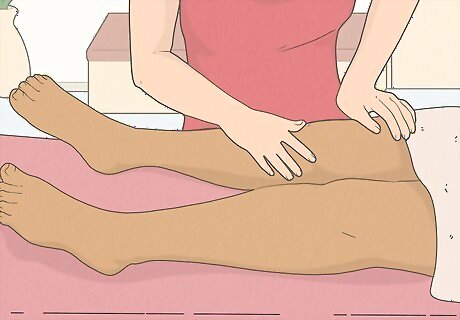
Book an appointment with a massage therapist if you're really sore. For the ultimate recovery session, book an appointment with your local massage therapist and specify that you’re there for muscle soreness. The massage can help to increase blood flow to your muscles, leading to a faster recovery. To find a licensed massage therapist near you, search “massage therapist near me.”
















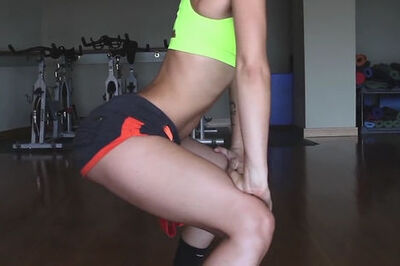



Comments
0 comment